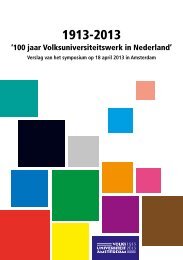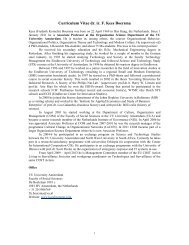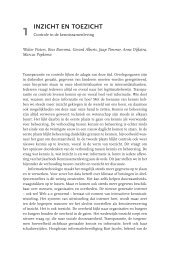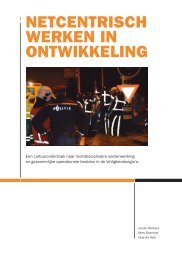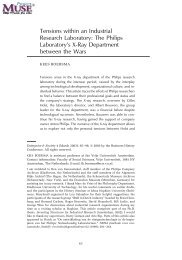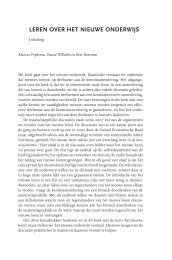Surveillance and Society - Kees Boersma
Surveillance and Society - Kees Boersma
Surveillance and Society - Kees Boersma
Create successful ePaper yourself
Turn your PDF publications into a flip-book with our unique Google optimized e-Paper software.
<strong>Boersma</strong>: Liminal <strong>Surveillance</strong>during the event publicly available information on Facebook, Twitter, <strong>and</strong> PicFog was used intensively bythe police. In combination with the CCTV images, it created what the police refer to as ‘the operationalpicture of the event’. Information on social media websites was regularly compared with the data of theemergency response system <strong>and</strong>/or with the information from the police on patrol. Not surprisingly,students celebrating Unofficial were very active on several social media websites. Vignette 3 gives an ideaof how social media was used in the control room setting:Vignette 3: Use of social media websitesIn the early morning there was an incoming call about a fire in an apartment building. Thelocal police checked Facebook <strong>and</strong> Twitter to see if there was any information about thefire. And indeed, someone had posted a message: “10am <strong>and</strong> the drunken stupidity ofUnofficial St Patrick’s day has already started a fire on campus. There are times I hate thistown”. Some Tweets mentioned the exact address of the building. For the police thisadditional information was an incentive to undertake action: “For me this is seriousenough now, I will send my people to the scene” one officer announced. Social mediabecame, in addition to CCTV, a source to double-check the incoming information of 9-1-1emergency calls. One of the officials explained this to me: “It is useful information, onlyif you use it right. It can be a falsifier for them but not for us”.By looking at posted pictures <strong>and</strong> footage on the internet, officers were able to get a feeling for what wasgoing on outside. This was useful because the serenity of the emergency control room was in sharpcontrast to the excitement on the streets <strong>and</strong> in the dorms. Some examples of Tweets that were projectedon the screens include: “Gonna be an interesting day. It’s Unofficial St Patrick’s day at UofI. The studentsare already out in green drinking booze on the porches”; “Unofficial St Patrick’s day is considered a battlethrough my eyes… between my body <strong>and</strong> alcohol. So yeah, it is considered GEAR”; “Celebration of StPatricks day. Carefree kids drinking/partying around the clock”.Watching social media <strong>and</strong> talking about the images was a way for the officers to kill the time. Every now<strong>and</strong> then the officers joked about the cameras: “Why don’t you go to the street <strong>and</strong> jump up <strong>and</strong> down infront of them!” By watching social media in combination with camera images they could not only ‘taste’the atmosphere outside but initiate conversations about the event (<strong>and</strong> past events) to make their workbearable during the quieter moments. In other words, social media was a welcoming source of variety intheir work. The conversations became more <strong>and</strong> more comradely, particularly in the hours when not muchwas going on in the streets of the Twin Cities, immediately becoming professional if the situation becamethreatening for public safety.Back to NormalTowards the end of Unofficial, when the action was ‘almost over’, the officers kept each other sharp byreflecting upon the camera images, telling each other stories about their work <strong>and</strong> actions during previousoccasions, still their attention eventually waned. One officer entered the room, late at night, <strong>and</strong> winked toone of the officers in the room: “Drive with me home tonight, <strong>and</strong> then you will see where the workinglieutenants are”. And although there was no planned end to the event—after all, the event is unofficial—most of the student activities visible to the cameras were over by 1 am. A recurrent remark towards theend of the evening <strong>and</strong> at the beginning of the night was: “It is like a regular Friday night now”.Vignette 4: The banality of surveillanceLate at night we had dinner in the operations center. The social media footage, theprojected images of CCTV, <strong>and</strong> local television news reports fused into a long, clutteredimage that we eventually experienced as cinema-like. It was as if we—present in theoperations center—were watching a movie: eating pizza, drinking soda <strong>and</strong> staring atfragments of camera images from an event far away without a clear plot, but fascinating<strong>Surveillance</strong> & <strong>Society</strong> 11(1/2) 115



